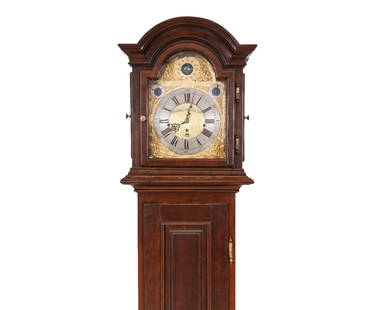
Meissen, Porcelain Group of Figures ‘Schäfergruppe’, c.
Similar Sale History
View More Items in Desk AccessoriesRelated Desk Accessories
More Items in Desk Accessories
View MoreRecommended Decorative Objects
View More








Item Details
Description
25th May 2016Lot 47: Objects are regular taxed. 19% VAT is added to the purchase price for deliveries within the EU.
Porcelain, glazed, painted polychrome gold and silver
Meissen, c. 1900
Porcelain Manufactory Meissen, established in 1710
Model: Johann Carl Schönheit (1730-1805), 1765
Underglaze blue swords mark, model number A41, impressed mark, painter’s signet and further numberings
Height: 19.2 cm
Good condition
Literature:
Cf. Sabine & Thomas Bergmann, Meissen-Figuren Modellnummern A 1 – Z 99, Erlangen 2014, vol. 2, p. 54, cat.-no. 79.
Condition:
The figure is in good condition with minor signs of age and wear. In places small professional restorations. The gold painting is partially slightly rubbed. The height measures 19.2 cm.
Johann Carl Schönheit (1730-1805)
Johann Carl Schönheit, born in Meißen, was a modeler at the Porcelain Manufactory Meissen between 1745 and 1794. Amongst others he was the colleague of Johann Joachim Kaendler and Michel Victor Acier. Since 1765 he created independently genre figures, as well as allegorical and mythological groups.
Porcelain Manufactory Meissen
Porcelain has been known in Europe since the 13th century, but always had to be imported from China. Thus it was mostly of lower quality – the Chinese rarely gave their best ware to the foreigners – and extremely expensive. As demand for porcelain became greater, European alchemists tried to discover the formula to create hard-paste porcelain. The production of the first European hard-paste porcelain was the result of a collaboration between the alchemist Johann Friedrich Böttger and the scientist Ehrenfried Walther Graf von Tschirnhaus at the court of Augustus the Strong, Elector of Saxony, in Dresden. As a matter of fact, it was finally achieved for the first time in Europe in 1708 to produce a white hard paste porcelain and in 1710 Augustus established Europe’s first hard-paste porcelain factory in the Albrechtsburg, a palace in Meissen. The so-called ‘Böttgerporzellan’ actually had more of a stoneware quality and it was not until the year 1713 that white porcelain was available for purchase. Initially unmarked, the motif of the ‘crossed swords’ was developed in the early 1720s and used from 1723 onwards. Since then, beautifully modelled and painted figures and table services were produced at Meissen, establishing its reputation as the pre-eminent porcelain factory in Europe. Outstanding potters, modelers and painters, e.g. Johann Joachim Kändler (1706-1775), Johann Gottlieb Klinger (1701-1781) and Count Camillo Marcolini (1739-1814), were employed at the factory, which dominated the 18th century style of porcelain, and Meissen wares and figurines were imitated by craftsmen at other porcelain factories throughout Europe. Meissen celebrated its 300 years of existence in 2008. Until today, Meissen porcelain is known for highest quality and originality and greatly appreciated.
Shipping costs excl. statutory VAT and plus 2,5% (+VAT) shipping insurance.
Buyer's Premium
- 29.75% up to €1,000,000.00
- 23.8% up to €2,000,000.00
- 17.85% above €2,000,000.00
Meissen, Porcelain Group of Figures ‘Schäfergruppe’, c.
Shipping & Pickup Options
Item located in Berlin, dePayment
































































![RICHARD SATAVA (B.1975) STUDIO ART GLASS LAMPWORK JELLYFISH PAPERWEIGHT: Studio art glass lampwork jellyfish paperweight, signed Satava (Richard Satava, American, b.1950), dated [20]01, colorless glass encasing semi-translucent jellyfish with thin ribbon tentacles, numbere](https://p1.liveauctioneers.com/21/328526/176979688_1_x.jpg?height=310&quality=70&version=1714678704)



















